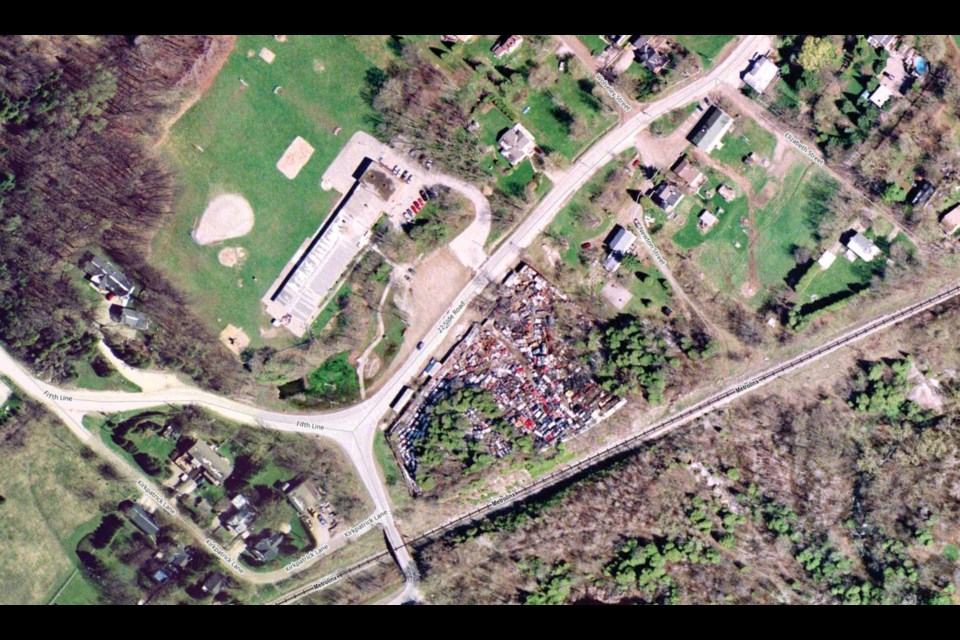The Town of Halton Hills has big plans to transform a Limehouse property that was once anything but beautiful.
The former junkyard across from Limehouse Public School is the future site of Tolton Park - a site the municipality hopes to turn into a jewel in the local park network.
“Because of the parking area here that we've already established, it will be a bit of a trailhead for the Bruce Trail and Limehouse Conservation Area,” said Mark Taylor, senior landscape architect for the Town. “Other activities that we're suggesting are an open lawn and picnicking, certainly some trails through the area, interpretive signage, potentially a playground.”
The future park directly abuts the Limehouse Conservation Area, specifically the northwest portion. The parking lot is about a two-minute walk from the trail head leading to the famed kilns, historical “ovens” used in the process of making quicklime. The tracks for GO Transit’s Kitchener line forms the border between Tolton Park and the conservation area.
The wealth of natural wonders don’t end there. Limehouse is one end of the Guelph Radial Line Trail, a 28 km path through some of the province’s most pristine wilderness.
But to turn the future park into a place fit for families and dog-parents will take some time, and the area’s recent history tells us why. Up until 2009, Tolton Park used to be a junkyard. Taylor himself documented this stage of its life just before the field was cleaned up.
“Most of this area, it was just chock full of cars and stacked many vehicles high,” Taylor said. “Almost every pocket and corner of the site was filled.”
Substances like petrochemicals, battery materials and hydrocarbons have leached into the soil, creating a toxic situation that would need to be remediated before construction can begin.
“(We) need to protect the future users of the park from the contamination.” he said. “So you can do that by either digging it all out and taking it and disposing of it in a proper facility. But there's a significant cost to that. Then the other option is basically bringing in material and capping this so that there's a barrier between the public and the contaminants.”
Before the junkyard, the site was a quarry. Limehouse is named after the industry that dominated the area, that of lime. The production process involved the removal of limestone from the earth, crushing it and super heating it in large kilns to make quicklime. Those kilns are still there along hiking trails in the conservation area. It has many industrial applications like metallurgy, paper making, the mining industry and more.
The Town hopes to start construction of the park next year. However, Taylor said that the process to get the project off the ground has taken longer than anticipated due to the unknowns in terms of the amount of contamination, where it's located, and getting proper sampling done.
“The hope is that by later this year, we'll have more definite direction on what the remediation is, and that we will be able to start design of the park and get the community consultation going.”



